
Ceviche, or seafood "cooked" in lemon or lime juice, is one of the most humble, rustic dishes ever created. And although Peruvian food scholars date ceviche to the 16th century, it's doubtful the cooks that prepared it knew the complex science behind "cooking" protein with acid. When you apply heat to meat, its protein fibers denature, or uncoil from their tightly wound forms and bind in a mesh-like pattern. Acid has the same effect on protein, especially in fish such as tuna. Technically, lemon juice doesn't cook the tuna, but it has the same effect as heat.
Step 1
Cut the tuna into slices or cubes and place it in a nonreactive bowl. Nonreactive materials include stainless steel, plastic and glass.
Step 2
Pour lemon juice over the tuna in the bowl and stir to coat it using a plastic, wooden or stainless-steel spoon. A basic ceviche comprises eight parts seafood to one part acid.
Step 3
Add a few simple, fresh flavoring ingredients to the ceviche. Just about any ingredient goes well with lemon-marinated tuna, but ceviche is best prepared using only three or four of the freshest ingredients. Classic preparations call for chilies, sliced onions and roughly chopped cilantro. You could add jalapenos, diced fruit, shallots, minced garlic or freshly chopped dill, to name a few complementary ingredients.
Step 4
Add a drizzle of oil to the ceviche, if desired. Since you're not cooking the tuna with heat, use a high-quality, flavored oil, such as avocado oil or extra-virgin olive oil.
Step 5
Season the ceviche to taste with kosher salt and freshly ground black pepper. In addition to seasoning, salt plays a role in "cooking" the ceviche.
Step 6
Stir the ceviche and cover the bowl with plastic food wrap. Place the bowl in the fridge.
Step 7
Let the tuna "cook" for one hour per half pound. Stir the ceviche every 30 minutes. If you want to add diced avocado, stir it in right before you serve the ceviche.
Related Articles

How to Make Easy 5 Ingredient Fresh ...
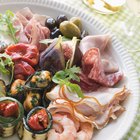
How Many Calories in Chopped Antipasto ...

How to Marinate Sashimi

How to Make Tuna and Noodle Casserole
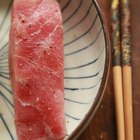
How to Cook Tuna on a Stove

How to Cook Bluefish

Does Vinegar Cook Salmon?
4 Healthy Dinner Ideas for Weight Loss

Is Miso Soup Vegan?
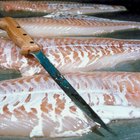
How to Grill a Cod Fish
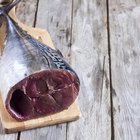
How to Smoke Tuna

How to Cook Swai With Breading

Calories in Subway Seafood Salad

How to Cook Pan Fried Deer Tenderloin

How to Cook Trevally
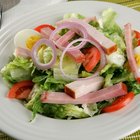
Chef Salad Nutrition Information

Avocado Serving Size & Nutrition

How to Make Seafood Salad

Salmon Dinner Menu
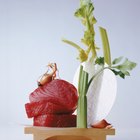
How to Sear Two Inch Thick Wild Ahi Tuna
References
Tips
- Always select the freshest tuna for ceviche. All fresh fish should have an ocean-like smell. Fresh, whole tuna have bright, clear eyes and moist skin with a shiny or iridescent appearance. Fresh tuna steaks and fillets have firm, blemish-free flesh.
- Make ceviche right when you want to serve it. If the tuna marinates too long in the lemon juice, it toughens.
- You can make ceviche with freshly squeezed lemon juice or bottled lemon, it doesn't change the dish. But you can grate the lemon zest into the ceviche for visual appeal and to supply little nibbles of pleasant tartness throughout.
Warnings
- Eating seafood marinated in acid is associated with foodborne illness and poses a greater health risk than seafood cooked with heat.
Writer Bio
A.J. Andrews' work has appeared in Food and Wine, Fricote and "BBC Good Food." He lives in Europe where he bakes with wild yeast, milks goats for cheese and prepares for the Court of Master Sommeliers level II exam. Andrews received formal training at Le Cordon Bleu.
Photo Credits
Comstock Images/Stockbyte/Getty Images